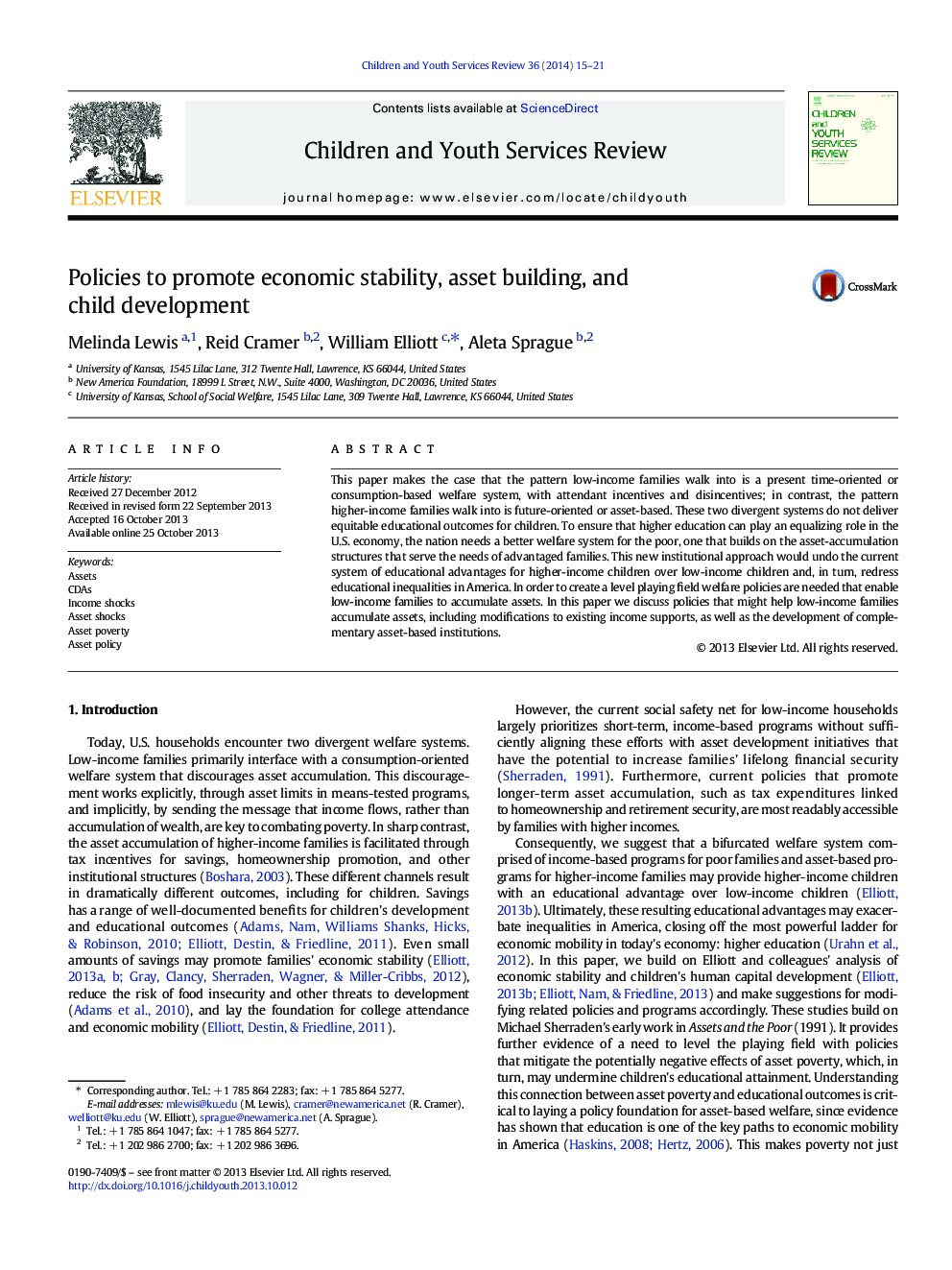| Article ID | Journal | Published Year | Pages | File Type |
|---|---|---|---|---|
| 346100 | Children and Youth Services Review | 2014 | 7 Pages |
•A bifurcated welfare system may exacerbate educational inequalities in America.•Welfare policies are needed that enable low-income families to accumulate assets.•We discuss policies that might help low-income families accumulate assets.
This paper makes the case that the pattern low-income families walk into is a present time-oriented or consumption-based welfare system, with attendant incentives and disincentives; in contrast, the pattern higher-income families walk into is future-oriented or asset-based. These two divergent systems do not deliver equitable educational outcomes for children. To ensure that higher education can play an equalizing role in the U.S. economy, the nation needs a better welfare system for the poor, one that builds on the asset-accumulation structures that serve the needs of advantaged families. This new institutional approach would undo the current system of educational advantages for higher-income children over low-income children and, in turn, redress educational inequalities in America. In order to create a level playing field welfare policies are needed that enable low-income families to accumulate assets. In this paper we discuss policies that might help low-income families accumulate assets, including modifications to existing income supports, as well as the development of complementary asset-based institutions.
